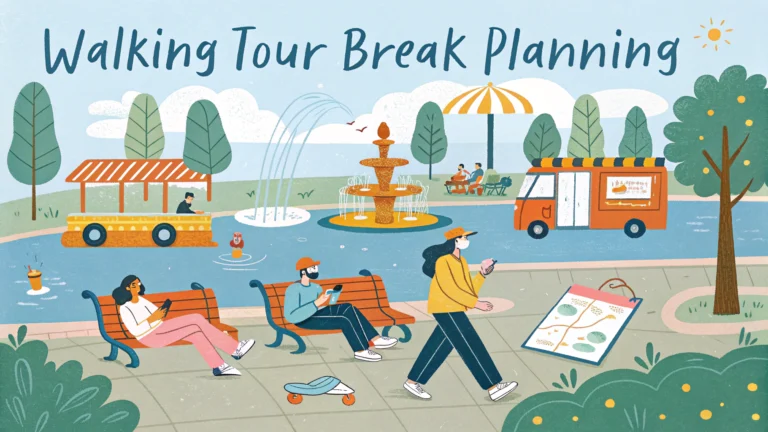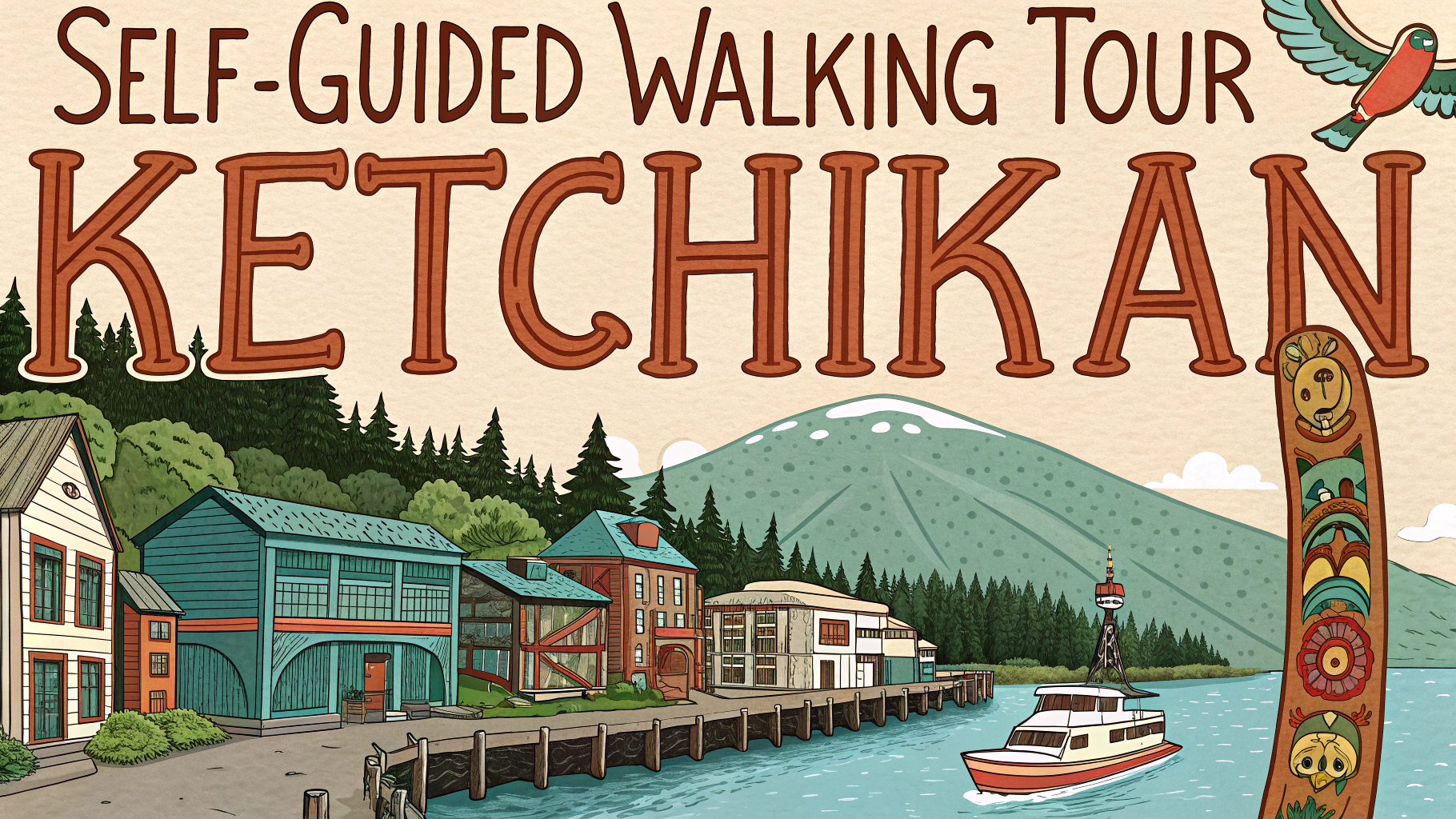Taking regular breaks during walking tours helps maintain energy levels and maximizes your sightseeing enjoyment.
Planning Your Break Schedule
A good rule of thumb is to stop for 5-10 minutes every hour of walking.
Schedule longer 20-30 minute breaks every 2-3 hours for meals or substantial rests.
- Morning break: Plan your first stop after 60-90 minutes of walking
- Lunch break: Aim for midday when attractions are busiest
- Afternoon break: Schedule around 3-4 PM when energy typically dips
Choosing Break Locations
Look for these ideal stopping points along your route:
- Public parks with benches
- Cafes with outdoor seating
- Museum lobbies or courtyards
- Public squares or plazas
- Botanical gardens
- Waterfront areas
Break Activities
Make the most of your stops with these activities:
- Review your map and next destinations
- Take photos of the surroundings
- Drink water and have a light snack
- Use restroom facilities
- Stretch your legs and feet
- Update your travel journal
Essential Break Items
Pack these items for comfortable breaks:
- Reusable water bottle
- Portable snacks (nuts, energy bars)
- Small foldable cushion
- Hand sanitizer
- Weather protection (umbrella, sunscreen)
Weather Considerations
| Weather | Break Location Tips |
|---|---|
| Hot Weather | Seek air-conditioned spaces or shaded areas |
| Rain | Use covered walkways, museums, or cafes |
| Cold Weather | Find indoor heating or sunny spots |
Special Tips for Different Groups
- Families with Children: Choose breaks near playgrounds or interactive attractions
- Senior Travelers: Select locations with comfortable seating and easy bathroom access
- Photography Enthusiasts: Plan breaks at scenic viewpoints
- Budget Travelers: Find public spaces instead of commercial establishments
Remember to check opening hours of indoor break spots before including them in your route plan.
Save offline maps marking public restrooms and rest areas for easy reference during your tour.
Consider purchasing a city tourist pass that includes access to attractions where you can take breaks.
Break Safety Tips
- Choose well-lit, populated areas for breaks
- Keep belongings secure and close
- Be aware of your surroundings
- Inform travel companions of break locations
- Save emergency contacts on your phone
Managing Group Breaks
Coordinate breaks effectively when traveling with others:
- Establish meeting points and times
- Use buddy system for bathroom breaks
- Consider different energy levels
- Keep group together in busy areas
Technology During Breaks
- Check navigation apps
- Update social media
- Charge portable devices
- Download area maps
- Check weather updates
After-Break Routine
Before Resuming Walk
- Double-check belongings
- Confirm next destination
- Adjust clothing/gear
- Ensure group is ready
Conclusion
Strategic break planning enhances walking tours by maintaining energy, comfort, and enjoyment. Customize break schedules to your group’s needs, while considering weather, locations, and safety. Regular, well-planned breaks transform challenging city walks into memorable experiences.
Remember these key points:
- Take regular 5-10 minute breaks hourly
- Choose appropriate break locations
- Pack essential break items
- Consider weather conditions
- Prioritize safety and comfort
FAQs
- How often should I plan breaks during a walking tour?
For every 2-3 miles (3-5 km) of walking, plan a 10-15 minute break. For full-day tours, include a longer 30-45 minute break for lunch. - What are the best places to take breaks during a self-guided walking tour?
Parks, cafes, public squares, benches near attractions, museums with seating areas, or historical landmarks with resting spaces are ideal break locations. - How much water should I carry during a walking tour?
Carry at least 16-20 oz (0.5-0.6L) of water for every 2 hours of walking. Double this amount in hot weather or high-humidity conditions. - What items should I pack for breaks during a walking tour?
Essential items include water, snacks, a small first aid kit, blister patches, a portable phone charger, and a lightweight foldable rain jacket. - How can I identify public restroom locations along my walking route?
Research beforehand using apps like Flush or Google Maps, and note locations of museums, libraries, shopping centers, and tourist information centers which typically have public facilities. - What’s the recommended walking pace for a self-guided tour?
Maintain a comfortable pace of 2-3 mph (3-5 km/h), allowing extra time for photo stops, attraction viewing, and navigation checks. - Should I plan indoor breaks during extreme weather conditions?
Yes, during hot or cold weather, schedule breaks at indoor locations like museums, galleries, or cafes to regulate body temperature and rest comfortably. - How do I plan breaks when touring with elderly people or children?
Plan more frequent breaks every 1-1.5 miles (1.6-2.4 km), choose locations with seating, and ensure easy access to restrooms and refreshments. - What’s the best time to schedule a lunch break during a full-day walking tour?
Schedule your main lunch break between 12:00-2:00 PM, approximately halfway through your route, allowing 30-45 minutes for rest and digestion. - How can I make my breaks more efficient during a walking tour?
Combine breaks with sightseeing opportunities, use break times to review your route and next destinations, and try to time breaks with attraction opening hours.








